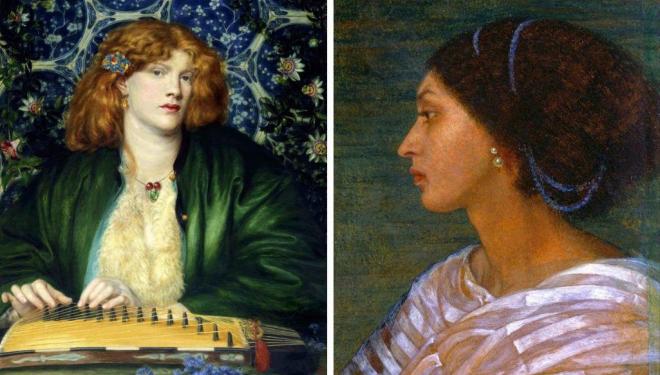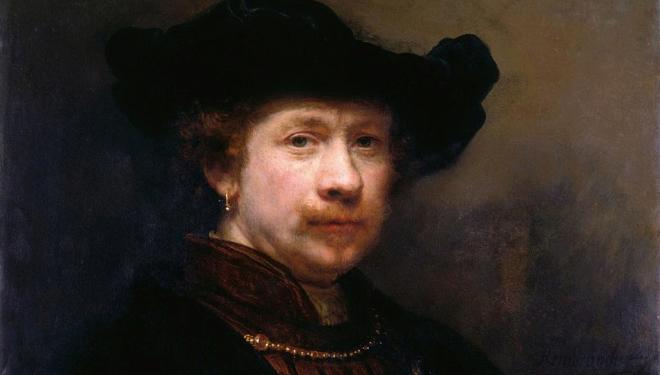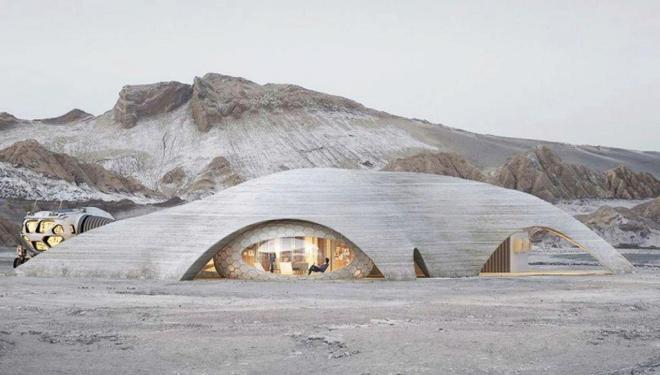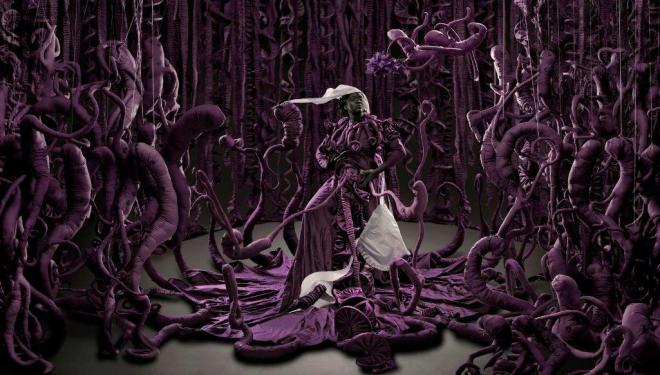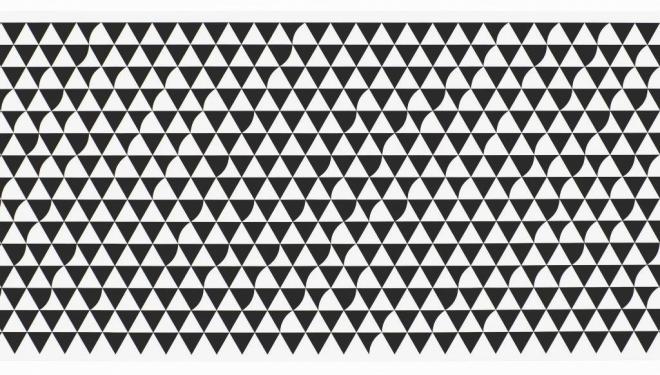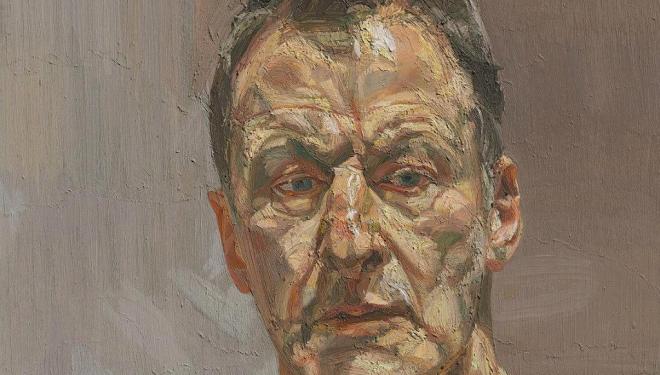
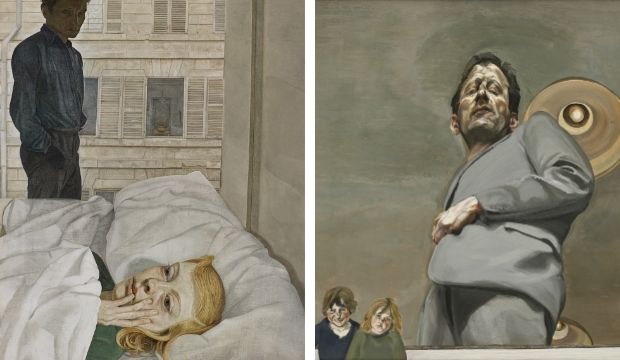
Left: Lucian Freud, Hotel Bedroom (1954) © The Lucian Freud Archive / Bridgeman Images. Right: Lucian Freud, Reflection with Two Children (Self-portrait) (1965)
Freud lurks in many of the paintings in this, the first exhibition dedicated to the artist’s self-portraits. In the early, tightly rendered drawings of his youth he is peering around corners, or popping up from the bottom of the page, just his forehead and eyes showing. Later on, he peeks through the foliage of a houseplant, or includes his feet, reflected in a mirror behind a model. Sometimes his presence is indicated with little more than a shadow. Take, for example, Flora with Blue Toenails (2000-1), a portrait of a young woman Freud met in a restaurant. She lies naked on a bed, awkwardly twisted, the strain of the pose showing on her pained, pink face (she needed treatment for her back after holding this position for so many hours). Freud has included himself in the form of a menacing shadow at the edge of the mattress, and, by doing so, increased the model’s apparent vulnerability.
When Freud is not lurking, he can be found looming. In his Reflection with Two Children (1965), the artist, dressed in a grey suit, his face oddly distorted, looks down at us. In the corner, the portraits of two smiling children seem an odd addition, their innocence contrasting sharply with the artist's sinister presence. Freud has been criticised for the way he painted women and children, as naked, vulnerable objects of his gaze. He said that he wanted to paint people who looked as comfortable without their clothes as his dogs did, but many of his models, especially the younger ones, appear quite the contrary. And, as the influence of Francis Bacon’s nightmarish figures began to permeate his work, Freud’s nudes became not just fleshy, not just naked, but raw and meaty.
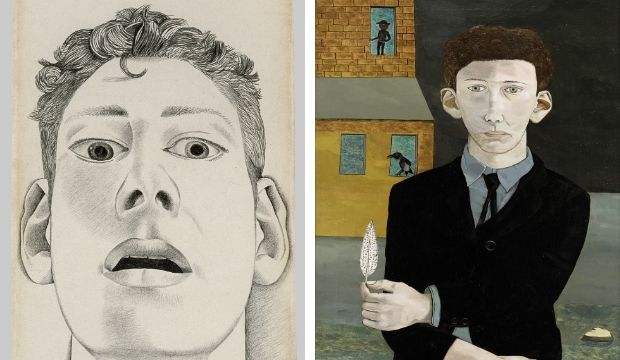
Left: Startled Man: Self-portrait, (1948) Private collection. © The Lucian Freud Archive / Bridgeman Images. Right: Man with a Feather, (1943). Private collection. © The Lucian Freud Archive / Bridgeman Images
This exhibition, which walks us through Freud's stylistic developments and increasing psychological acuity, ends with a full-length self-portrait of the artist, aged 71. Here, he turns his uncompromising gaze on himself, adding a lumpy texture to the buttery impasto that he mastered so completely, and evoking the ageing skin of his face without a hint of vanity. Such works have led to comparisons with Rembrandt, whose own self-scrutiny produced some of the most moving portraits in the Western tradition.
This show brilliantly charts Freud's journey from a strange and awkward youth with an equally awkward style, to a young man flirting with surrealism and toying with new techniques. And then the mature artist emerges, commanding, assured and even predatory (he had a reputation for being a womaniser). But after he leaves behind the introspection of his teenage years, it feels as though none of his self-portraits are really about him. Freud is playing a part, adding drama with the flair of an auteur, striving to capture his own face with the same objectivity that he levelled at the many naked bodies he captured on canvas. There's a lot to chew over here, and even if you come to feel as though you don't like the man, you will surely find yourself drawn into his paintings.
| What | Lucian Freud: The Self-portraits, Royal Academy review |
| Where | Royal Academy, Burlington House, Piccadilly, London, W1J 0BD | MAP |
| Nearest tube | Green Park (underground) |
| When |
27 Oct 19 – 26 Jan 20, 10:00 AM – 6:00 PM |
| Price | £18 |
| Website | Please click here for more information |
.jpg)
